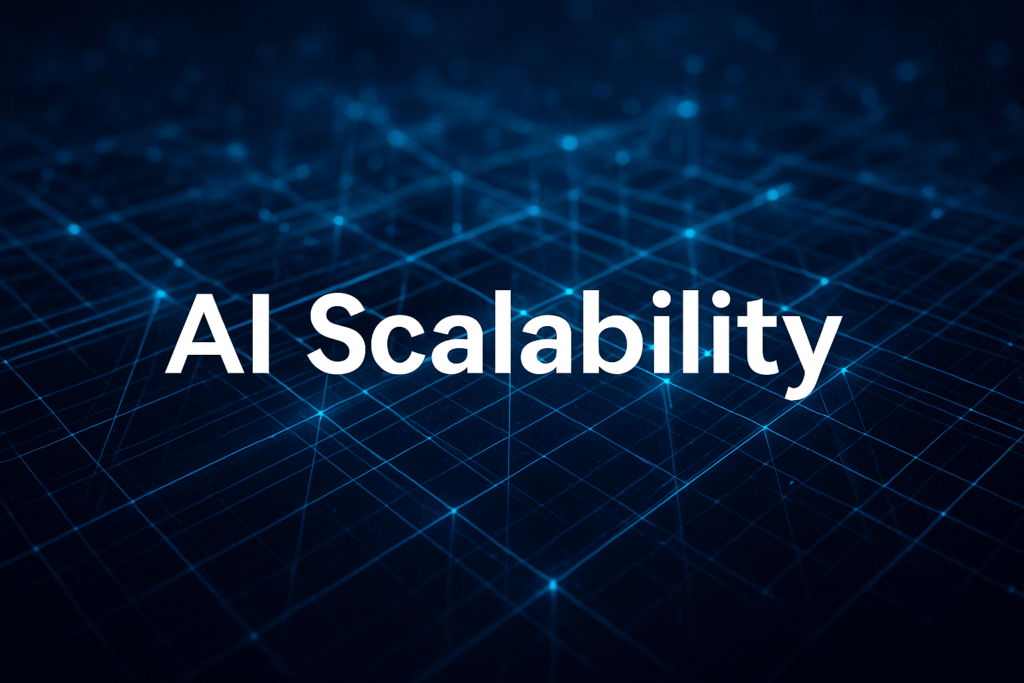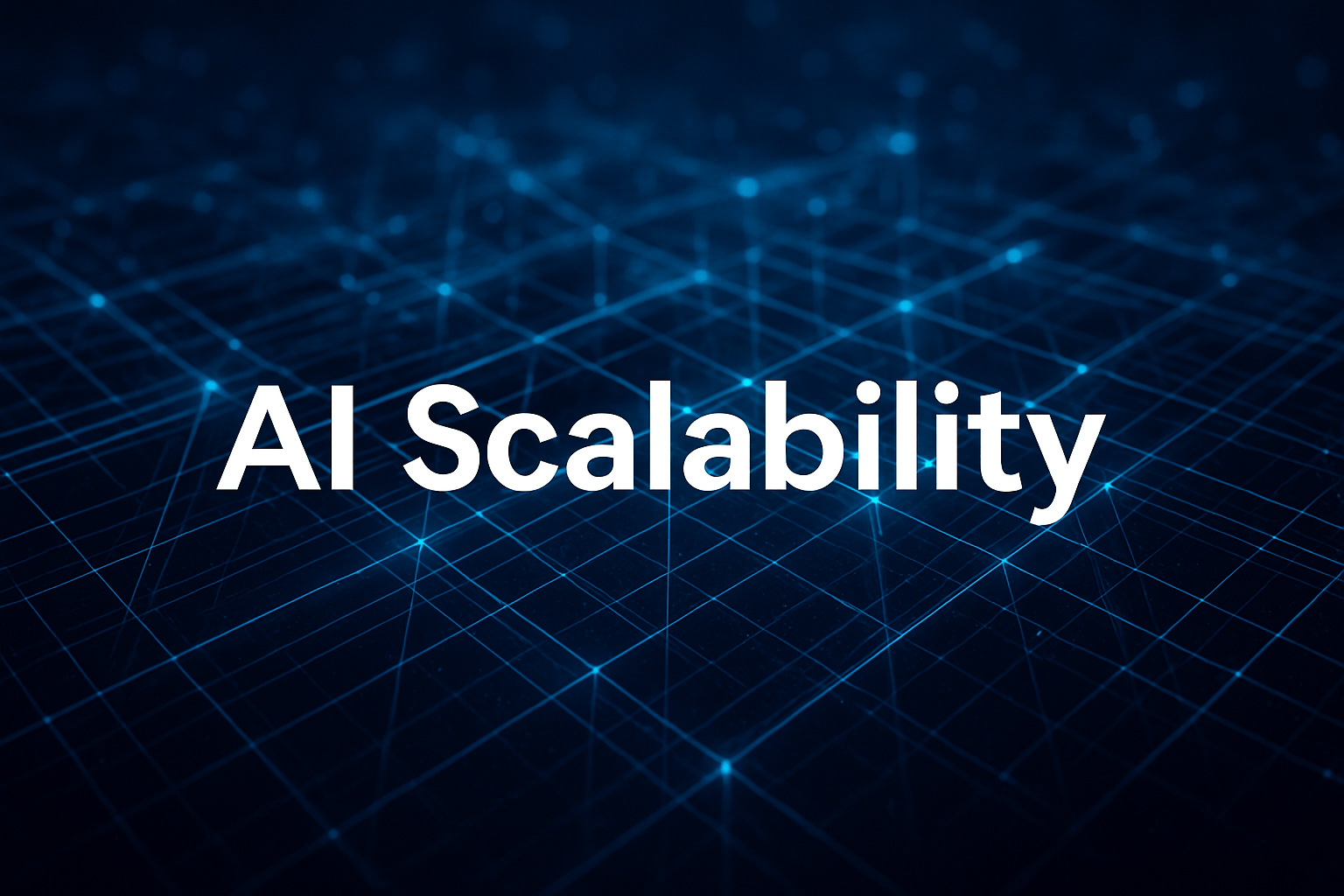In a decisive move to assert its global dominance in emerging technologies, the White House has unveiled a groundbreaking Artificial Intelligence (AI) Action Plan centered around one core theme: AI scalability. The strategy is more than just a tech roadmap it’s a bold national statement underscoring America’s commitment to lead the world in the age of intelligent machines.
As artificial intelligence continues to disrupt industries and redefine global power structures, U.S. officials say that scalability the ability to expand and sustain AI systems effectively is the key to outpacing international competitors and safeguarding national interests.
“This action plan is not just about advancing technology it’s about securing America’s future,” said Dr. Neera Tanden, the White House Chief Technology Officer. “AI scalability is at the core of how we compete, innovate, and protect our values.”
What Is AI Scalability and Why It Matters

AI scalability refers to an AI system’s ability to adapt, grow, and maintain performance under increasing workloads. In a world racing toward automation, scalable systems allow for mass deployment of intelligent solutions across defense, healthcare, finance, education, and infrastructure. The U.S. government believes this capacity is the foundation for a tech-driven economy.
By designing a national framework around scalable AI solutions, the White House aims to future-proof federal operations while empowering startups, researchers, and industries to innovate without boundaries.
Inside the AI Action Plan: Building the Future

The newly released AI Action Plan outlines several high-impact initiatives:
- $10 Billion in Federal AI Funding: Over the next five years, significant federal investments will support research, testing, and infrastructure. This financial boost will accelerate the development of scalable AI solutions and strengthen U.S. influence in global AI markets.
- Launch of the National AI Research Resource (NAIRR): This platform will provide academic institutions, small businesses, and nonprofits with access to high-quality data, powerful computing tools, and development environments critical for driving AI scalability at all levels.
- AI Infrastructure Modernization: The government is pushing to overhaul outdated digital systems and replace them with modern AI-capable infrastructure to ensure efficiency and security.
- Mandatory AI Safety & Ethics Reviews: Any large-scale or public-facing AI systems funded or approved by the federal government will undergo safety, ethics, and bias checks, aligning with national values and legal standards.
- Strategic Talent Development: New federal education partnerships will promote AI-focused curricula at universities and technical schools, ensuring a workforce that can manage and deploy AI systems at scale.
Global Stakes and U.S. Tech Policy
This policy release comes as China, the European Union, and other global tech leaders ramp up their own artificial intelligence strategies. In many ways, the plan is a direct response to the escalating AI infrastructure arms race.
While China continues its massive investment in state-run AI research, U.S. officials are banking on innovation through openness and private-public collaboration. The action plan reflects a uniquely American approach: empowering entrepreneurship while enforcing strong ethical boundaries.
“We’re not just reacting to global competition we’re shaping it,” said Commerce Secretary Gina Raimondo. “This is about leading the next century of innovation with integrity.”
AI Policy Meets National Security
Beyond economics, AI scalability is increasingly being linked to U.S. national security. From predictive intelligence in defense systems to automated cybersecurity tools, scalable AI applications are becoming critical to federal agencies.
The action plan outlines guidelines for the deployment of military-grade AI and calls for deeper integration of scalable AI into national defense strategies. By tying U.S. AI policy to both innovation and protection, the administration is making it clear: AI leadership is a matter of sovereignty.
Economic Impact and Industry Reactions
Top tech leaders, including CEOs from OpenAI, Microsoft, and Nvidia, praised the White House for its forward-thinking approach. They emphasized the importance of national AI innovation and welcomed the funding and resources promised under the new framework.
Startups, especially those working on scalable AI solutions, are expected to benefit greatly from NAIRR’s shared infrastructure model. Industry analysts predict the action plan could generate over 500,000 new tech jobs over the next five years.
Meanwhile, venture capital interest in AI has surged since the announcement, with investors eyeing the long-term gains in AI infrastructure and algorithmic governance.
A Defining Moment for U.S. Tech Leadership
The White House AI Action Plan marks a defining moment in U.S. tech history. With AI scalability positioned as both a strategic asset and a national priority, America is setting the tone for global innovation.
The path forward will demand transparency, collaboration, and rapid adaptation. But with this blueprint in place, the U.S. is poised to not only compete but to lead.







